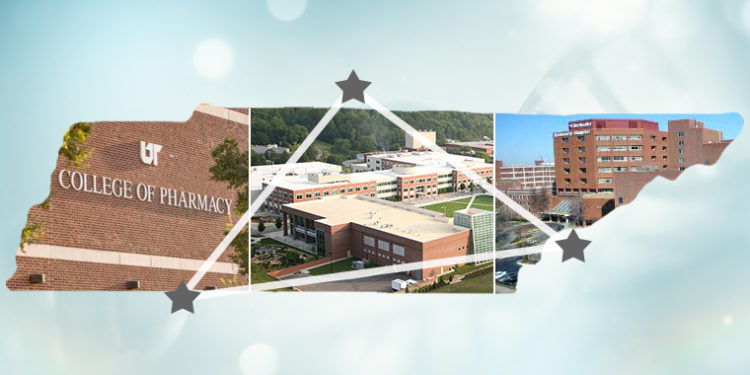
There’s a triangle of teamwork in the state of Tennessee that’s developing the future of targeted therapeutics. The UTHSC College of Medicine, UTHSC College of Pharmacy, and Oak Ridge National Laboratory are combining efforts and expertise to create breakthrough treatments for renal (kidney) disease – an extraordinary scientific and academic effort that’s already attracting commercial biotech interest.
This new treatment stems from the research of Dr. L. Darryl Quarles, the UTMG Endowed Professor and Division Director of Nephrology at the UTHSC College of Medicine. Darryl’s work uncovered a novel bone-kidney axis – pinpointing how the two are linked by a hormone known as fibroblast growth factor 23, or FGF23. Made in the bones, FGF23 directs the kidneys to regulate bone mineralization as well as phosphate and vitamin D metabolism. Excess or insufficient FGF23 in the body causes a host of diseases and endocrine disorders.
This discovery kicked off an effort formally known as computational drug discovery, a technologically-based method of discovering new drugs and developing new treatments. The trio of partners each played a key role in the process to translate this new knowledge into targeted treatments for chronic kidney diseases. Here’s how the research paradigm works:
The process starts with Darryl, who identified the key target: FGF23.
⬇
He passes the baton to UT/Oak Ridge National Laboratory – specifically Jeremy Smith, director of the UT/Oak Ridge National Laboratory Center for Molecular Biophysics and Governor’s Chair for Molecular Biophysics. Utilizing ORNL’s supercomputers, Jeremy conducts high-throughput screening to scan millions of compounds and sift out hundreds of thousands of possibilities for compounds that can bind to the FGF23 hormone. He performs a process known as molecular dynamic compound docking, screening large numbers of chemical libraries to view binding patterns and identify promising compounds that bind to FGF23 in a manner that may make good candidates for new therapeutics.
But to test how these potential drug combinations would work outside the computer and inside a human body, it’s necessary to make them, if they’re not already commercially available.
⬇
So Jeremy hands the baton to the UTHSC College of Pharmacy at Memphis – Here, medicinal chemists, such as Duane Miller, Wei Li, and Jiawang Liu, turn these ideas into reality. Taking the many compounds Jeremy identifies, the chemists in the College of Pharmacy modify them into the form of a drug: adjusting solubility, increasing half-lives, or tweaking a commercially available compound to increase its affinity for FGF23, and thus its effectiveness as a drug. During this process they create “composition of matter,” which provides opportunity to obtain patents on the new compounds.
These new compounds are synthesized and given to Quarles’ laboratory for in-vitro and in-vivo testing to show efficacy and safety. The triangle of innovation repeats, researching and ranking best options and modifying them to weed out liabilities, until new treatments emerge.
The best compounds with drug-like properties then advance to trials in pre-clinical animal models. The novel FGF23 antagonists have advanced to this stage, already garnering commercial interest and attracting a significant biotech partnership with a pharmaceutical company that prefers to remain anonymous at this time.
“Innovative medical treatments aren’t widely associated as emerging from Memphis or Knoxville – people tend to think of the Research Triangle area, Boston, or California,” said UTRF Vice President Richard Magid. “But our assets, partnerships, and expertise position the University of Tennessee to achieve these breakthroughs through collaboration.”
Dr. Quarles also expresses the hope that other investigators at UTHSC will take advantage of these resources to develop novel drugs for other disease targets to advance UTHSC/UT-Knoxville/ORNL as a leader in precision medicine.